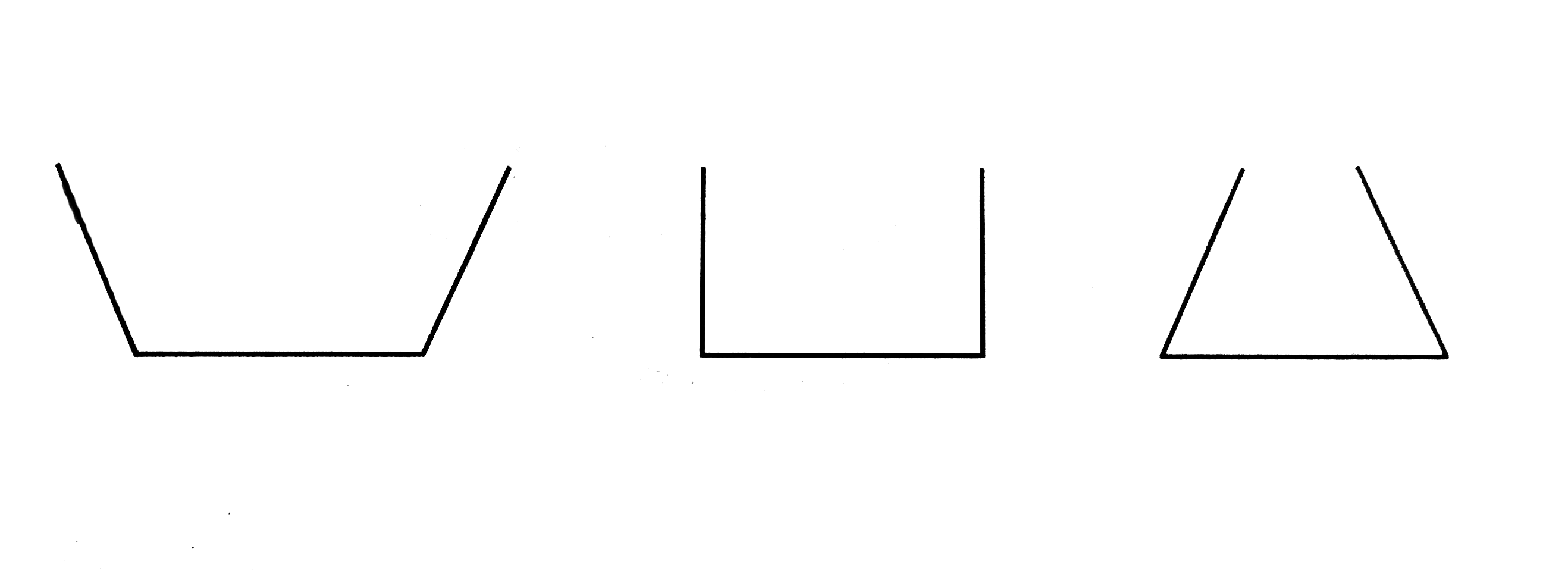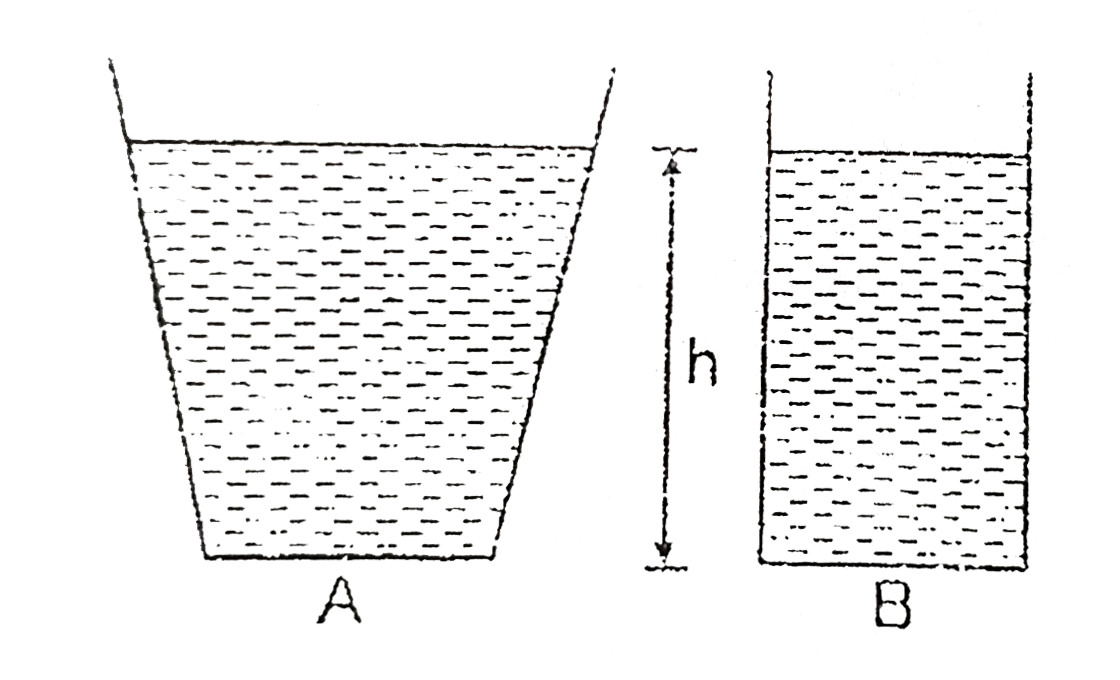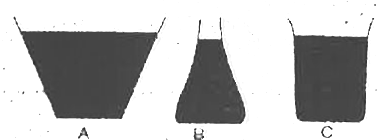Three vessels having different shapes are shown in Fig , having the same base area and the same weight when empty . The vessels are filled with mercury to the same level . (Neglect the effect of the atmosphere) .

(b) Which vessel shows the maximum weight when weighed on a weighing scale or do they all weigh the same ?
The weight of each filled vessel is equal to the weight of the vessel itself plus the weight of the mercury inside . The vessels themselves are of equal weights , but vessel A holds more mercury than C , while vessel B holds less mercury than C . Vessel A weights the most and vessel B weighs the least .
Topper's Solved these Questions
- BOOK - RESNICK AND HALLIDAYCHAPTER - FLUIDSEXERCISE - SAMPLE PROBLEM 14.111videos
FLUIDS
- BOOK - RESNICK AND HALLIDAYCHAPTER - FLUIDSEXERCISE - SAMPLE PROBLEM 14.121videos
FLUIDS
- BOOK - RESNICK AND HALLIDAYCHAPTER - FLUIDSEXERCISE - SAMPLE PROBLEM 14.091videos
FLUIDS
- BOOK - RESNICK AND HALLIDAYCHAPTER - ELECTROMAGNETIC WAVES EXERCISE - PRACTICE QUESTIONS (Integer Type)3videos
ELECTROMAGNETIC WAVES
- BOOK - RESNICK AND HALLIDAYCHAPTER - FORCE AND MOTION - I EXERCISE - PRACTICE QUESTIONS (Integer Type)3videos
FORCE AND MOTION - I
Similar Questions
Three vessels having different shapes are shown in Fig , having the same base area and the same weight when empty . The vessels are filled with mercury to the same level . (Neglect the effect of the atmosphere) .

(a) Find which vessel has the maximum and which vessel has the minimum pressure at the bottom , or is the pressure same ?View SolutionThree vessels having different shapes are shown in Fig , having the same base area and the same weight when empty . The vessels are filled with mercury to the same level . (Neglect the effect of the atmosphere) .

Even though mercury exerts the same downward force on the bottom of each vessel , then why do vessel weigh differently ?View Solution
Knowledge Check
- Question 1 - Select One
The three vessels shown in figure have same base area. Equal volumes of a liquid are poured in the thre vessels. The force on the base will be
 AABBCCDequal in all
AABBCCDequal in all - Question 2 - Select One
Two vessels A and B of different shapes have the same base area and are filled with water up to the same height h (see figure). The force exerted by water on the base is FA for vessel A and FB for vessel B. The respective weights of the water filled in vessels are WA and WB. Then
 AFA>FB,WA>WBBFA=FB,WA>WBCFA=FB,WA<WBDFA>FB,WA=WB
AFA>FB,WA>WBBFA=FB,WA>WBCFA=FB,WA<WBDFA>FB,WA=WB - Question 3 - Select One
Two vessels have different base area. They are filled with water to the same height. If the amount of water in one be 6 times that in the other, then the ratio of pressure on their botton will be
A16:1B8:1C4:1D1:1
Explain why a soft plastic bag weighs the same when empty or when filled with air at atmospheric pressure ? Would the weights be the same if measured in vacuum ?
View SolutionWater is poured to same level in each of the vessels shown in the figure , all having the same base area . In which vessel is the force experienced by the base maiximum ?
 View Solution
View SolutionThree vessels A, B and C of different shapes contain water upto the same height in the figure. PA,PBandPC be the pressure exerted by the water at the bottom of the vessels A, B and C respectively. Then
 View Solution
View SolutionThree different positions of the same dice are shown have which number is on the face opposite the face showing 5?
 View Solution
View SolutionTwo vessels A and B of different shapes have the same base area and are filled with water up to the same height h (see figure). The force exerted by water on the base is FA for vessel A and FB for vessel B. The respective weights of the water filled in vessels are WA and WB. Then
 View Solution
View Solution

